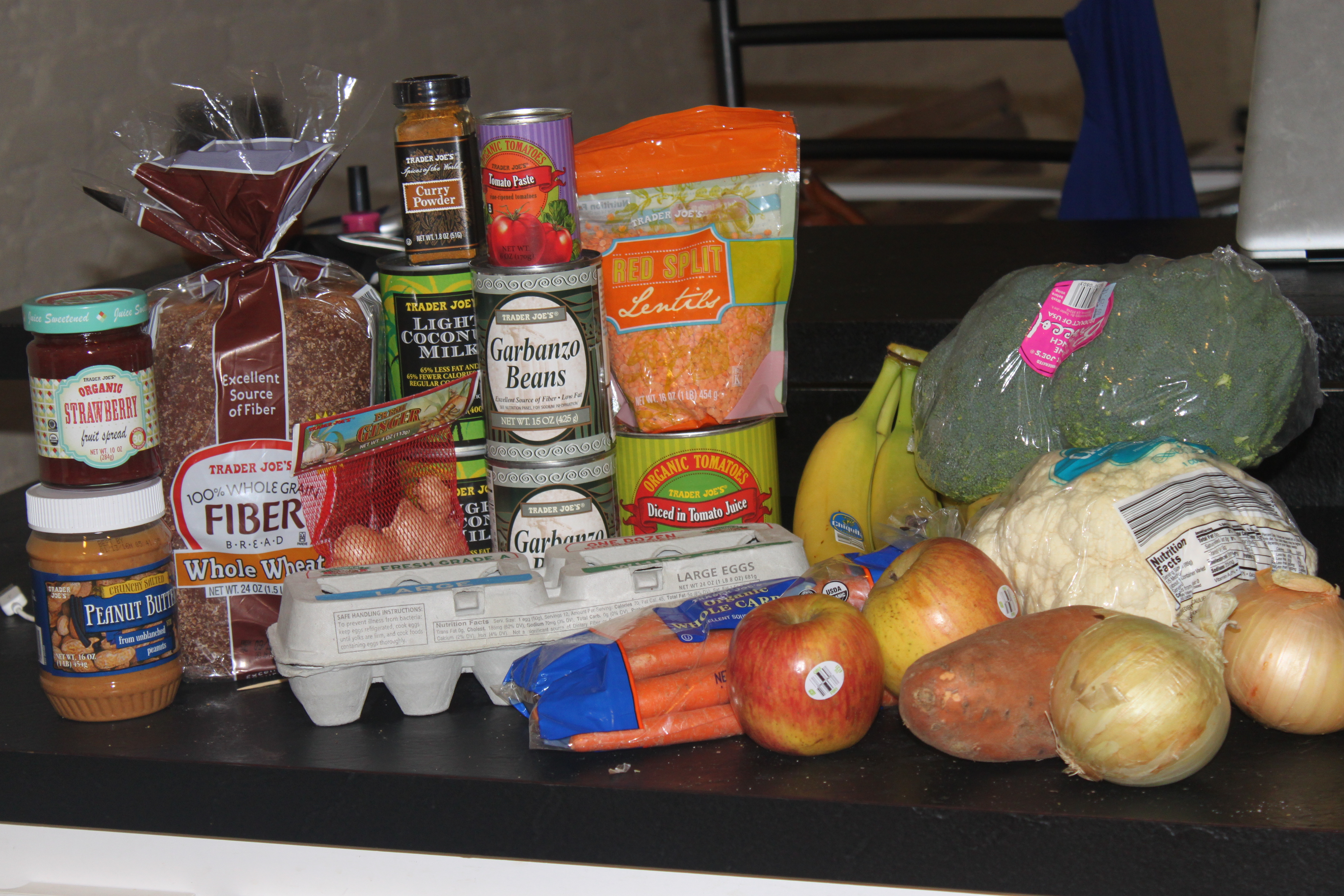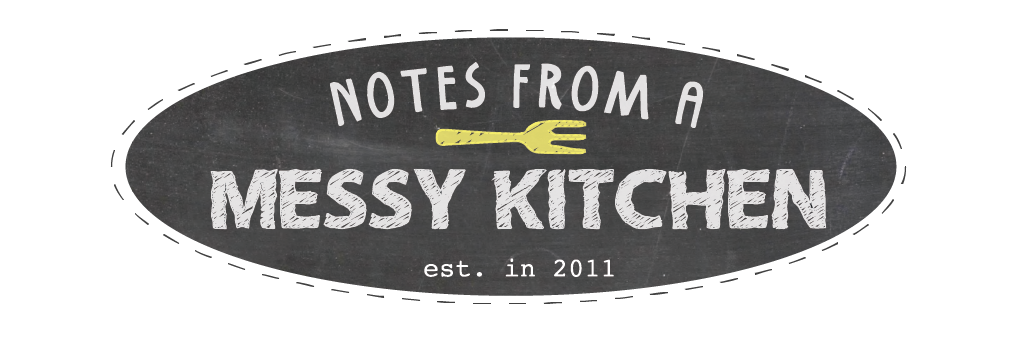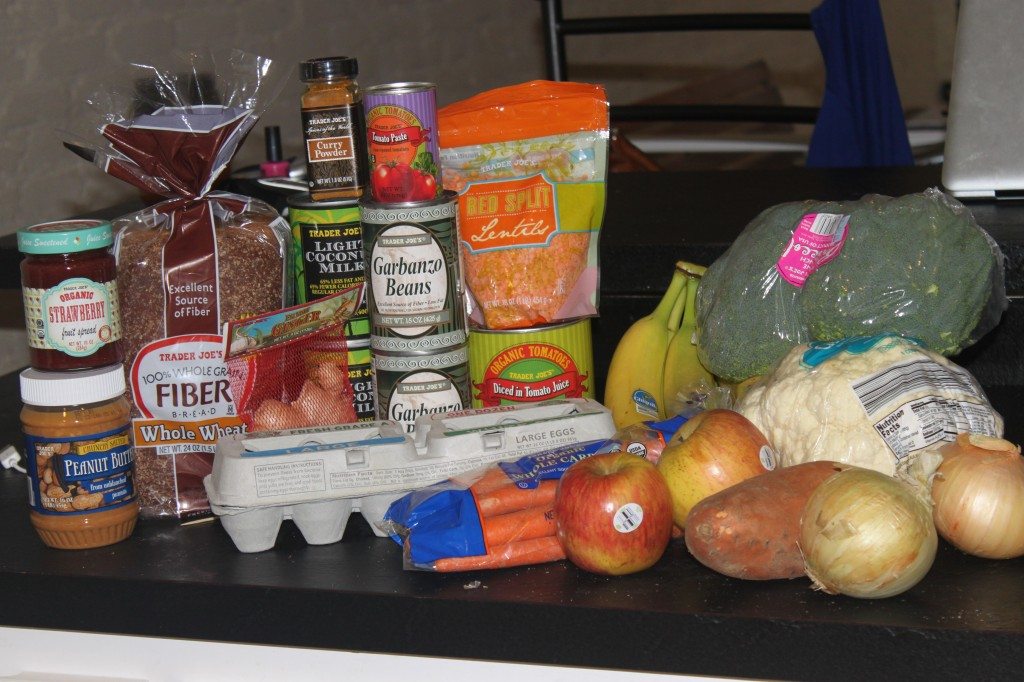Preparing for the SNAP Challenge: Just How Far Can I Stretch $33.79?

Yesterday I told you about my plans for a seven day SNAP challenge to wrap up Hunger Action Month. I also went shopping for provisions. Where I live is in close proximity to many grocery stores, which already puts me at a significant advantage when it comes to finding healthy and affordable options. Many SNAP recipients live in “food deserts,” geographic areas where such access is limited or nonexistent because grocery stores are too far away. According to the Food Empowerment Project, wealthy districts have three times as many supermarkets as poor ones do, white neighborhoods contain an average of four times as many supermarkets as predominantly black ones do, and grocery stores in African-American communities are usually smaller with less selection. Access really is half the battle. Check out this nifty little tool from USDA that maps supermarket accessibility in the United States.
Anyways, I chose to do my shopping at Trader Joe’s, as I generally find their prices to be lower than other area grocery stores. Another advantage: I have a car, meaning that I was able to drive to my grocery store of choice. According to USDA, 2.3 million people live over a mile from a grocery store and do not have a car. Public transportation is available for some of these folks, but may be cost prohibitive. The alternative is often a convenience store, where healthy food is much more expensive if available at all.
My goal, of course, is to create meals within my budget that are both filling and nutritious. I decided to go vegetarian and get my protein through eggs and legumes. While I had put in a good bit of thought and research into my meals for the week, I found that meal planning is much harder when you are so restricted by cost. You can’t be sure exactly how much things will cost or what will be on sale. Whereas I generally would compare prices and pick the cheaper of the two options, under such a strict budget you may have to eliminate items or change your recipe entirely.
I found myself incredibly anxious, both about staying under $33.79 and about getting enough food to get me through the week without being hungry. Trying to figure out how to get the most bang for my buck without going over my budget meant that shopping took much longer than usual. A loaf of bread for $2.99, or six English muffins for $1.49? Is 100% whole grain worth the extra $0.50? Do I get a bag of sweet potatoes for $1.69, or one for $0.49? I tried to keep tabs on how much I had in my cart using the calculator on my phone, but I kept losing track and having to start over. At one point, a store clerk who had seen me pacing aisles, picking things up and putting things back asked me if I needed help, which only made me more anxious.
After over an hour, I finally made it to the checkout line. I ultimately decided to double two of the dinner recipes and eliminate the third, sacrificing variety because it’s cheaper to cook in bulk. I decided I’d do without raisins in one of the recipes, as the cheapest bag was $2.69. When the cashier rung me up, I ended up about $1 over my budget. I had to quickly decide whether to remove the jelly, an apple or the brown rice medley. While the obvious answer is to return the jelly which isn’t filling or nutritious, I was unable to bear the idea of eating plain peanut butter sandwiches all week so I put back the rice instead (we’ll see how I feel about that by Sunday). I stood there turning red as the cashier yelled “three bells!” and a manager came over to remove the rice from my bill because I couldn’t afford an extra $1.69.
I definitely could have bought more food for the same price, but that would have meant sacrificing the produce. I think I have enough food to get me through this challenge without being hungry, but we’ll have to see as the week progresses. Stay tuned!
My final haul:
- Dairy: 1 dozen eggs
- Meat: None!
- Produce: 2 onions, 2 apples, bananas, 1 head broccoli, 1 head cauliflower, 1 bag carrots, 1 sweet potato, fresh ginger
- Canned goods: diced tomatoes, 2 cans light coconut milk, 2 cans chickpeas, 1 can tomato paste, peanut butter, jelly
- Dried goods: lentils, curry powder, 1 loaf whole wheat bread



This is pretty much my budget, except peanut butter is a no-go because it can be $6-7 or more for a small jar here in the “international foods” aisle. I’ll be watching your week’s menu plans to see if I can adapt it for Geneva. 🙂
That’s interesting – I didn’t even think about how different what’s affordable is from country to country! Is there a local spread that is similar? I’d love to hear about some of the meals you have been making in Geneva!
Nutella. 🙂 But that is so packed full of sugar that I don’t think it counts as a substitute. Black beans (a staple of American budget cooking) are also difficult to find (imported from Portugal in the international foods aisle) and not that cheap. The cheapest things to cook here are quiches and lentil dishes. Cheese, eggs, bread, and chocolate are the first things that come to mind when I think of affordable food groups here. And yes, chocolate counts as a food group in Switzerland. 🙂
I have to say, that sounds a lot better than most of our affordable foods!
[…] post is part of a series. Read post one, post two, post three, post four, post five, post six, and post […]